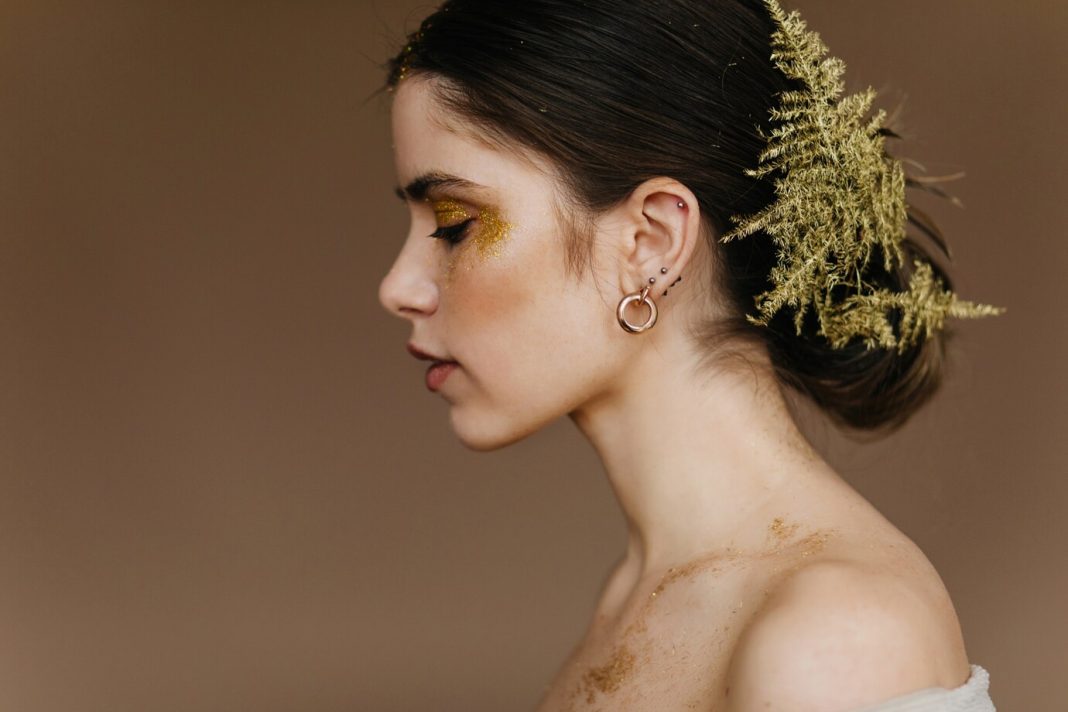flat ear piercing
A fashionable and fashionable type of body modification that has been increasingly popular in recent years is the flat ear piercing. This kind of piercing is usually situated above the conventional lobe piercing and is usually found on the “flat” or upper cartilage of the ear. A modern take on more traditional ear piercings like the conch or helix, the flat ear piercing is renowned for its sleek and uncluttered appearance. This piercing is a flexible option for people who want to improve the beauty of their ears because it can be customised with different types of jewellery.
1. First of all, what is a flat ear ring?
The flat, upper portion of the ear’s cartilage is where a flat ear piercing is positioned. The flat piercing rests on the smooth, comparatively flat portion of the cartilage, as opposed to other piercings like the lobe or the helix, which are found on the more rounded or curving parts of the ear. It is situated between the start of the helix and the ear’s natural contour. This particular piercing is special because it gives the ear a more edgy appearance without being unduly ostentatious.
2. Process and Intensity of Pain
Although it takes some accuracy, having a flat ear piercing is a rather simple procedure. The process, which is usually carried out by a qualified piercer, entails cleaning the region, marking the location of the piercing, and then making the hole using a hollow needle. Because the ear’s cartilage might be sensitive, the pain is usually low to severe, although most people find it manageable.
After the piercing, some people can have some little soreness or puffiness, but these side effects usually go away in a few days. In order to avoid infection or difficulties during the healing process, it is crucial to adhere to the appropriate aftercare guidelines.
3. Options for Jewellery
The range of jewellery options available for the flat ear piercing is one of its most alluring features. The selection of jewellery enables individual expression and customisation, ranging from basic rings and studs to more complex styles like barbells or clickers. Titanium, surgical steel, gold, and platinum are common materials for flat ear piercings; many people choose hypoallergenic choices to prevent inflammation.
The jewellery fits gently on the ear because the flat ear piercing is situated in a comparatively flat area, making it simple to wear every day. This piercing is both practical and stylish because the size and design of the jewellery may be customised to suit personal tastes.
4. Recovery and Aftercare
Compared to lobe piercings, flat ear piercings, like all cartilage piercings, require more time to heal. Depending on the person’s body and aftercare regimen, the recovery period usually takes six to twelve months. To guarantee that the piercing heals properly during this period, it is essential to adhere to the recommended aftercare.
Aftercare entails avoiding handling the piercing with unclean hands, washing it with saline solution or a mild antiseptic, and delaying jewellery changes. In order to avoid pressure or irritation, it’s also crucial to avoid sleeping on the side of the piercing. The chance of infection, scarring, or protracted recovery can be reduced by adhering to these aftercare guidelines.
5. Flat Ear Piercing Benefits
The flat ear piercing is a popular option for body modification aficionados due to its many advantages. First of all, it offers a distinctive and stylish touch without going overboard. The flat ear piercing gives off an attractive yet edgy appearance that can go well with other piercings because it rests on the upper cartilage. The piercing’s adaptability is further enhanced by the ease with which it may be accessorised with various jewellery pieces due to its position.
Additionally, to create a more complex and unique ear design, the flat ear piercing can be coupled with other piercings like a tragus or helix. Wearers can use a variety of thoughtfully chosen piercings to show their unique style and preferences.
6. Risks and Considerations
There are a few things to think about even if getting a professional to conduct a flat ear piercing is comparatively low-risk. If appropriate aftercare is not taken, there is a chance of infection, keloid formation, or piercing rejection, just like with any cartilage piercing. Because the piercing location is flat, some people may also have cartilage irritation or trouble keeping their jewellery in place.
Speaking with a qualified piercer with cartilage piercing experience is crucial if you’re thinking about getting a flat ear piercing. They can minimise the chance of difficulties by assisting you with the procedure and making sure the piercing is positioned correctly.
7. Conclusion: A Chic and Distinctive Component
A popular and adaptable body modification that gives off a sleek and fashionable appearance are flat ear piercings. Their placement on the cartilage of the ear gives them a subtle yet distinctive look that can be further accentuated with other types of jewellery. The flat ear piercing is a fantastic choice for anyone who want to make a modest yet striking statement, whether they want to match previous piercings or add a distinctive touch to their ear.
A flat ear piercing can be a durable addition to your collection of body art if you choose the right jewellery and take good care of it while it heals. For many years to come, piercing fans will continue to choose flat ear piercings due to their beauty and versatility.
